
Horse-Themed Festivals in Fukushima, Iwate, and Miyazaki
Guideto Japan
Culture- English
- 日本語
- 简体字
- 繁體字
- Français
- Español
- العربية
- Русский
Mounts of the Deities
Recent scholarship holds that horses were first domesticated over 4,000 years ago in central Asia and in what is now southern Russia. The animals were prized for their usefulness in transporting riders and cargo farther and more quickly than had previously been possible.
Horses first arrived in Japan around the fifth century, brought over from Mongolia via the island of Tsushima, then an important center for commerce and cultural exchanges with the Asian continent. Japanese valued horses for the work they provided on farms as well as in warfare, their agility giving mounted fighters an advantage on the battlefield. Beginning in the Nara period (710–94), when they were still a rarity, they came to be viewed as mounts used by deities. White horses were particularly esteemed and were presented as offerings to Shintō shrines. Today, Japan boasts many horse-themed festivals, ranging from those originating in military arts training to others celebrating ancient farming rituals. Below we look at three well-known festivals.
Sōma Nomaoi
(Last Saturday in May through to the following Monday, Sōma, Minamisōma, Fukushima)
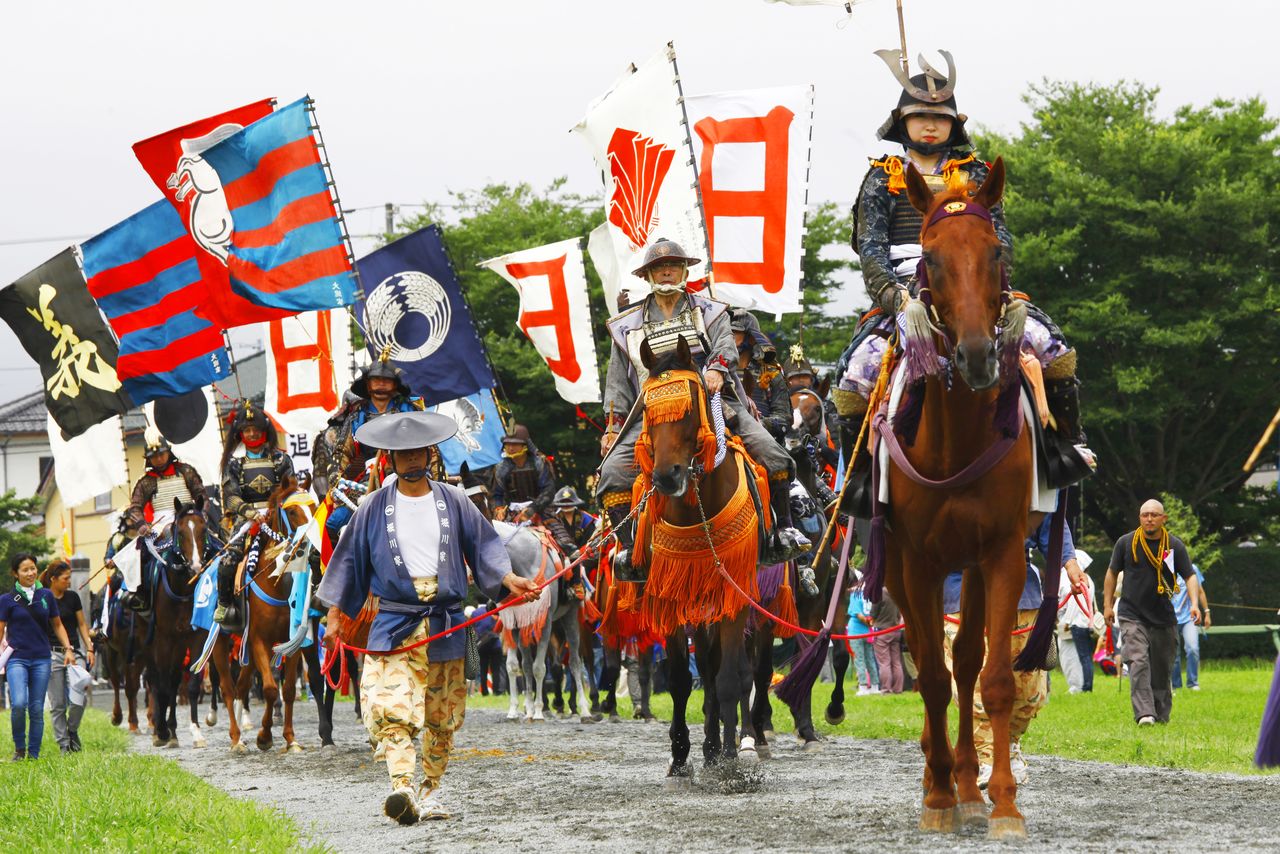
Riders dressed in samurai regalia and bearing standards recreate an ancient ritual. (© Haga Library)
The Sōma Nomaoi, a festival dating back more than a millennium, is associated with the rebellious warrior Taira no Masakado (903–40). Its origins are said to be military drills that Masakado conducted in which wild horses, serving as stand ins for enemy fighters, were chased across the nearby plains. To allay the suspicions of the imperial court that he might be plotting an uprising, Masakado cleverly claimed that the exercise was a “festival” and presented captured horses to a shrine. The Sōma clan continued the ritual of its founder Masakado over the subsequent centuries, and today the Sōma Nomaoi draws eager spectators each summer for three days to the Sōma district of Fukushima Prefecture.
On the morning of the first day, the festivities begin with the sōdaishō omukae, a reception ceremony held at the Sōma Nakamura Shrine. From there, a person serving as “commander-in-chief” and a company of riders dressed as samurai proceed to Hibarigahara Field, the main ceremony site, in a re-enactment of a general leading his mounted troops.
On the morning of the second day, over 400 riders from nearby districts parade to the festival site. Clad in katchū traditional armor, armed with swords, and flying banners emblazoned with family crests and other symbols, they make an impressive sight. In the afternoon, katchū keiba (armed horse race) take place, the armor-clad riders racing bareheaded around a 1-kilometer course. This is followed by the equally exciting shinki sōdatsusen (sacred flag competition), in which riders vie to grab two sacred banners launched into the air aboard fireworks, wildly jockeying for position as they spur their mounts in pursuit of the flags floating down from the sky.
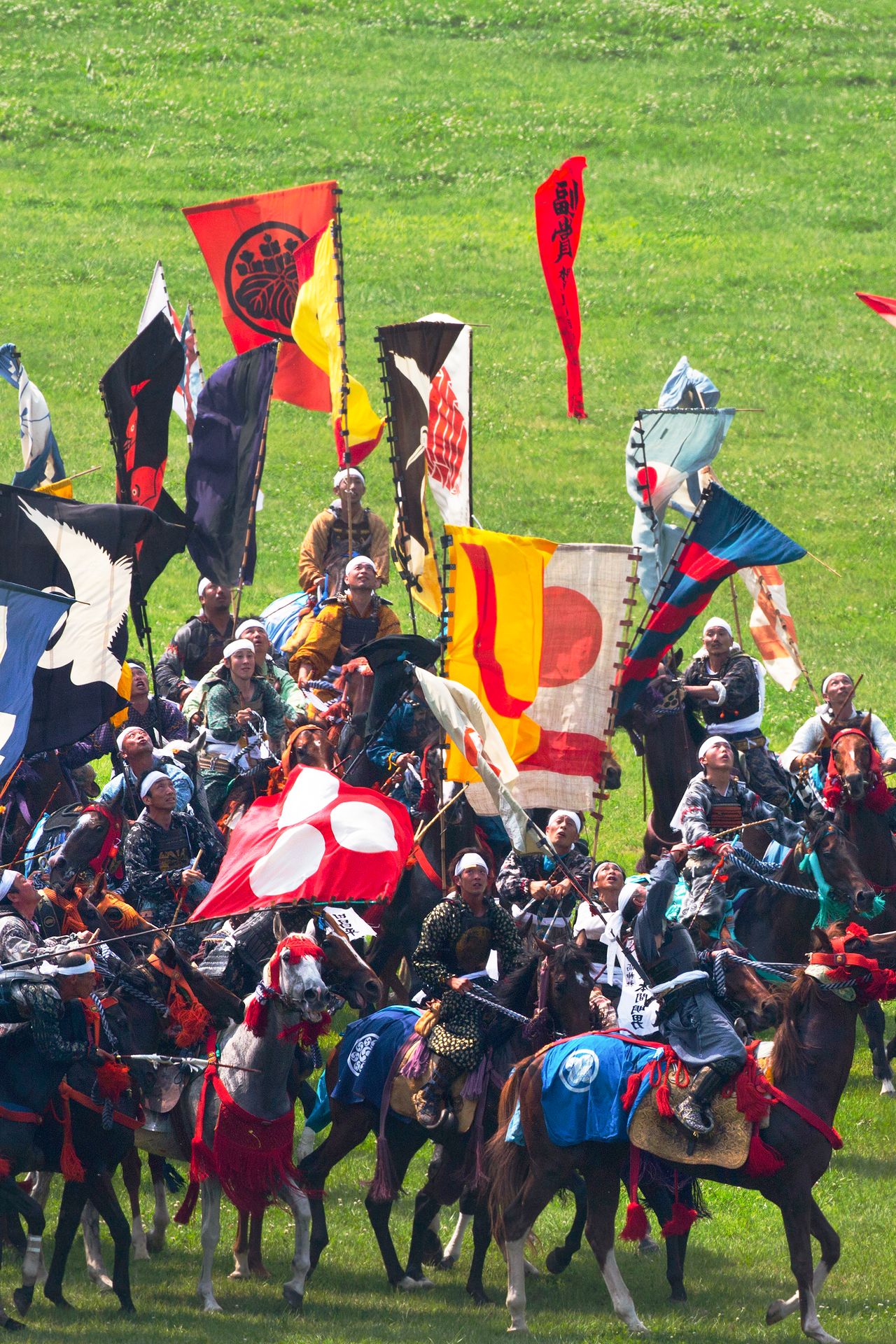
Riders swarm as they struggle to snatch the sacred flags. The victors, in high spirits, then dash up the hillside to present their prize to the commander-in-chief camped at Nakamura Shrine. (© Haga Library)
The nomakake (wild horse capture) takes place on the third and final day and is the most important ritual. Riders drive several unsaddled horses into a pen on the grounds of Odaka Shrine in Minamisōma, where youths clad all in white, including their headbands, try to catch a horse of their choice using only their bare hands. The captured animals are then offered to the shrine.
Horses have long been an integral part of life in Sōma, with several generations of families raising horses for the event and riding clubs common in the area. But many families lost horses in the tsunami triggered by the Great East Japan Earthquake of March 2011. That summer, the event was greatly scaled back, and only the Shintō rituals were performed. However, there was an unforgettable moment when, at the sōdaishō omukae ceremony, the rider serving as commander-in-chief boldly declared that “neither the massive quake, the tsunami, or the meltdown at the nuclear power station will defeat the samurai spirit.” The event was held in full the next year, with 400 riders participating and over 40,000 spectators.
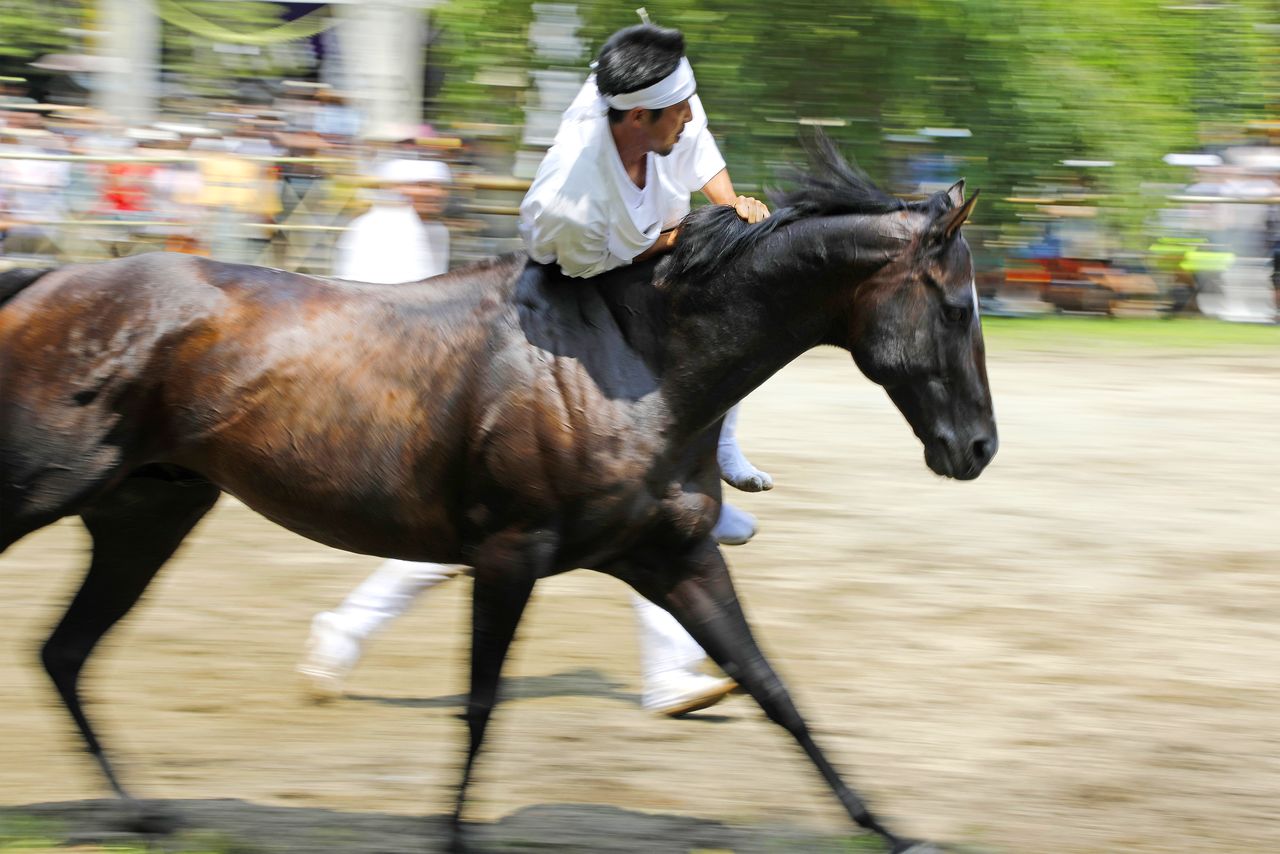
The nomakake ritual is said to be unchanged since ancient times. (© Haga Library)
Chagu-Chagu Umakko
(Second Saturday of June, Takizawa and Morioka, Iwate)
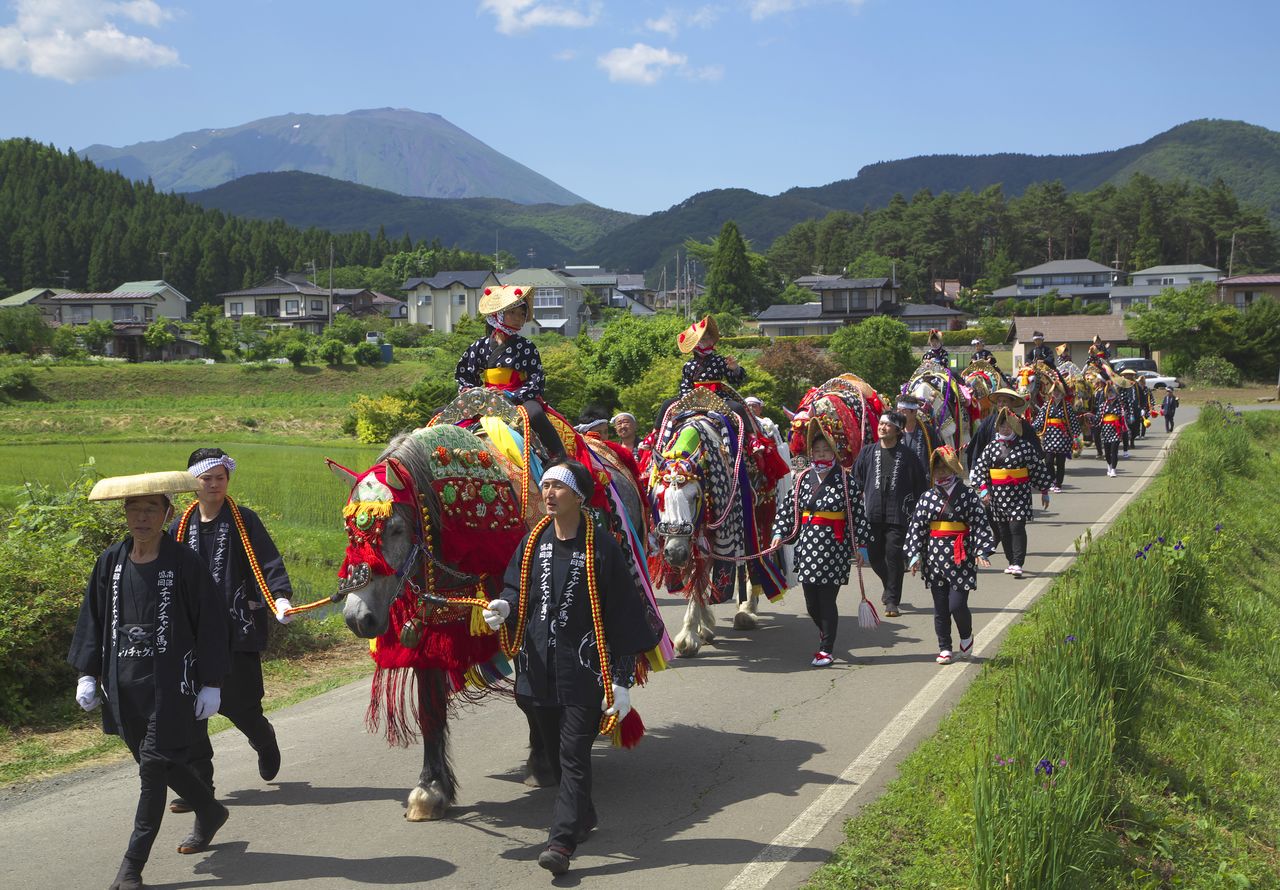
Brightly clad horses and their handlers create an enchanting scene. (© Haga Library)
The flat grasslands of north-central Iwate Prefecture have been prime horse country since the Nara period. The Nanbu clan that ruled the region in the Edo period (1603–1868) capitalized on the abundant grazing to make horse husbandry its main industry, and its Nanbu breed was in great demand as mounts for warriors.
Nanbu horses were also used for farming, contributing to bountiful harvests and becoming intimately connected with the land and its inhabitants. The region’s traditional magariya dwellings, for instance, housed humans and equines under the same L-shaped roof, with a main section for two-legged inhabitants and a perpendicular wing for horse stables.
The Onikoshi Sōzen Shrine in the city of Takizawa worships Ukemochi-no-kami, the goddess of food and the protector of horses. In the past, June was the month when horses, having finished the hard work of tilling the paddies in preparation for rice planting, were taken to the shrine to pray for their good health.
Today, this ritual continues, with the colorfully caparisoned horses leaving the Sōzen Shrine and travelling a 14-kilometer parade route to the Hachiman Shrine in neighboring Morioka. With Mount Iwate towering in the background, the procession winds through the lush early summer countryside to the chagu-chagu sound of the bells on the horses’ harnesses, from which the festival takes its name. This bucolic scene perfectly expresses the love and care lavished on the horses.
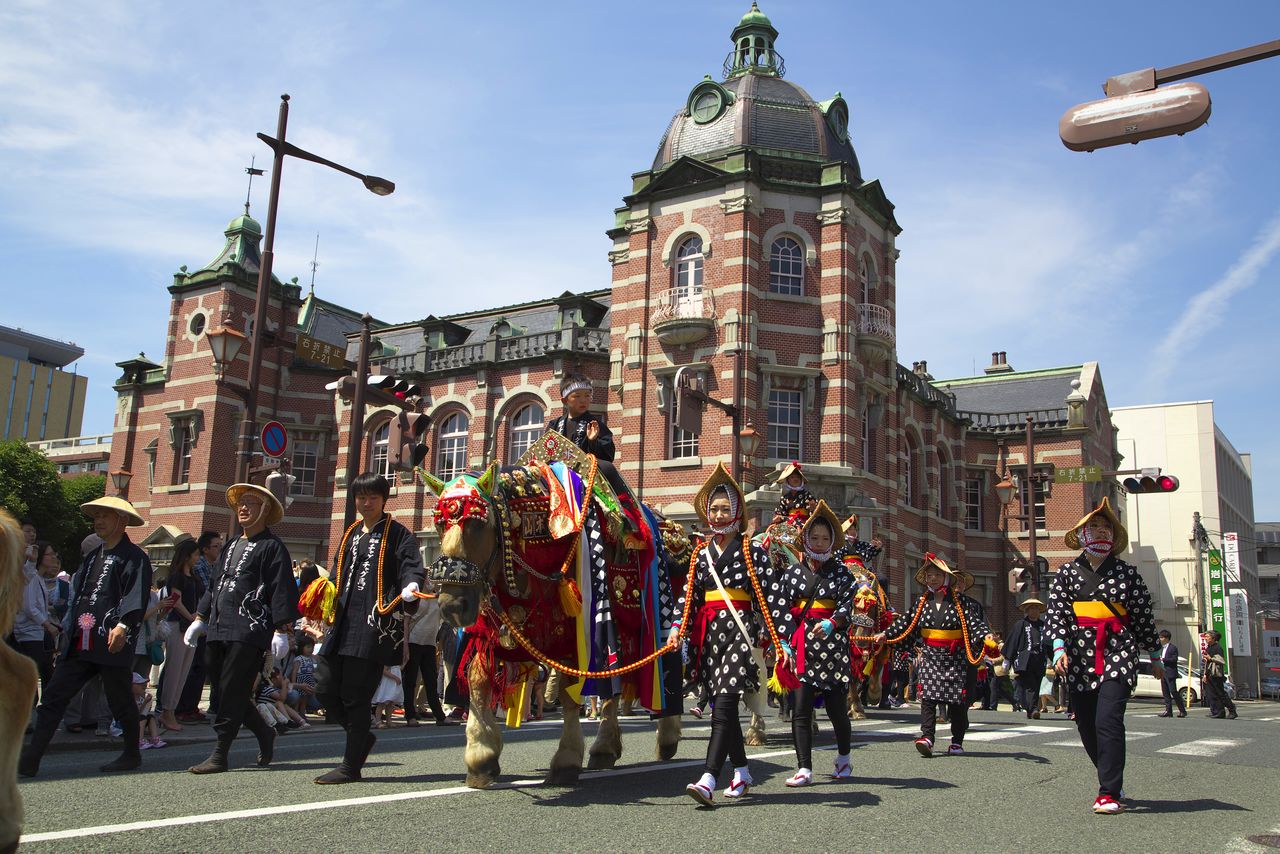
The trek to Morioka takes four hours. (© Haga Library)
Ondasai
(First Sunday in July, Misato, Miyazaki)
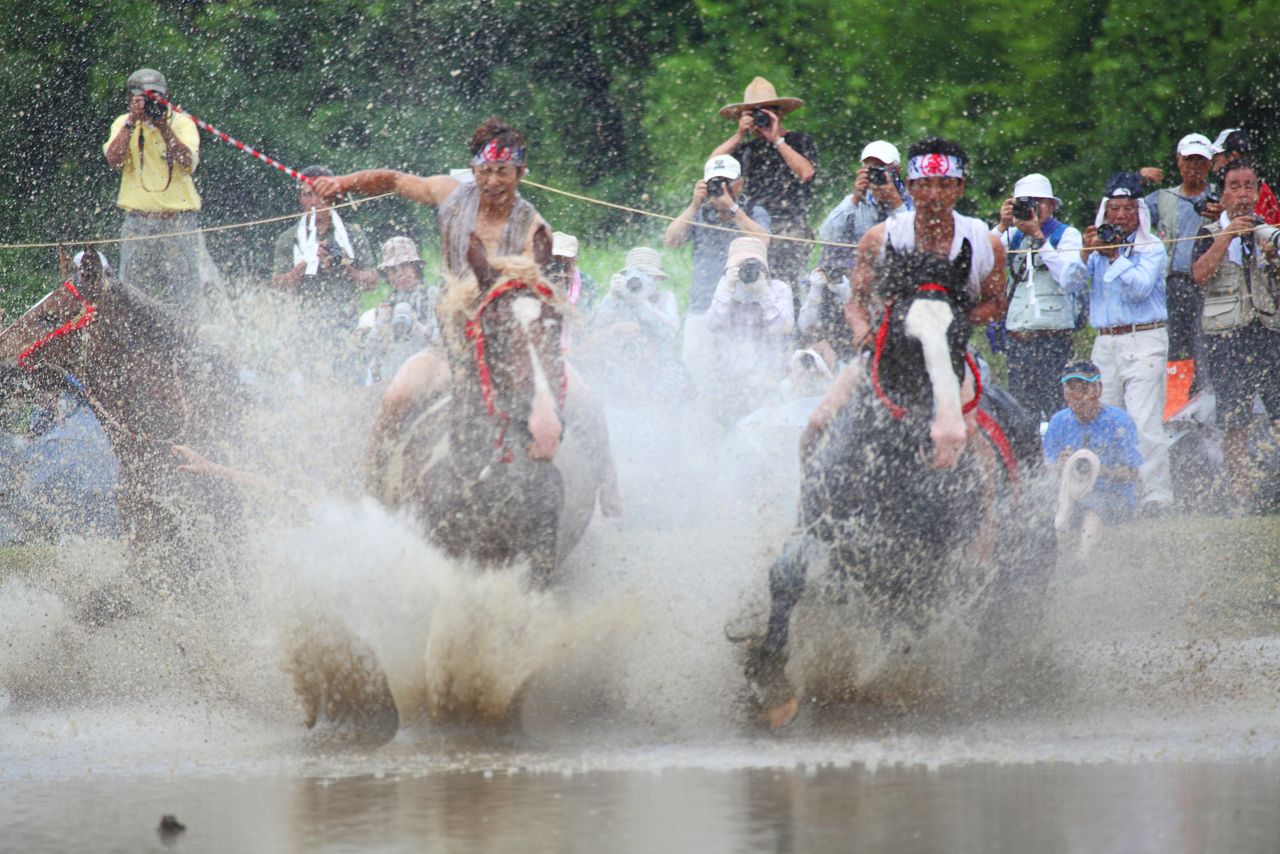
The umaire ritual features sturdy farm horses racing through a flooded rice paddy. (© Haga Library)
The ondasai in the northern part of Miyazaki Prefecture is known as Japan’s wildest rice-planting festival. Dating back over 1,000 years, it features horses galloping madly through a flooded rice paddy. The event is the annual festival of the Tashiro Shrine on the slopes of Mount Gongen, where a plow is venerated as the main deity.
A priest from Uenno Shrine in the foothills ascends to the Tashiro Shrine to welcome the sacred plow. A procession led by a person costumed as the deity Sarutahiko and followed by a mikoshi (portable shrine) and other floats descends the mountain, heading for a sacred paddy that has been flooded in preparation for rice planting.
Following prayers and sacred kagura dances preformed in the worship hall, the festival’s main event, the umaire, begins. Youths clad in happi festival coats ride horses bareback, barreling around the rice paddy and flinging mud every which way. Some riders proceed alone, while others may pair up and race their horses around the paddy. When a horse gets suddenly stuck in the mud, its rider is often thrown into the muck, much to the delight of the crowd of onlookers. The horses receive a round of applause when they successfully run the circumference of the paddy at full speed.
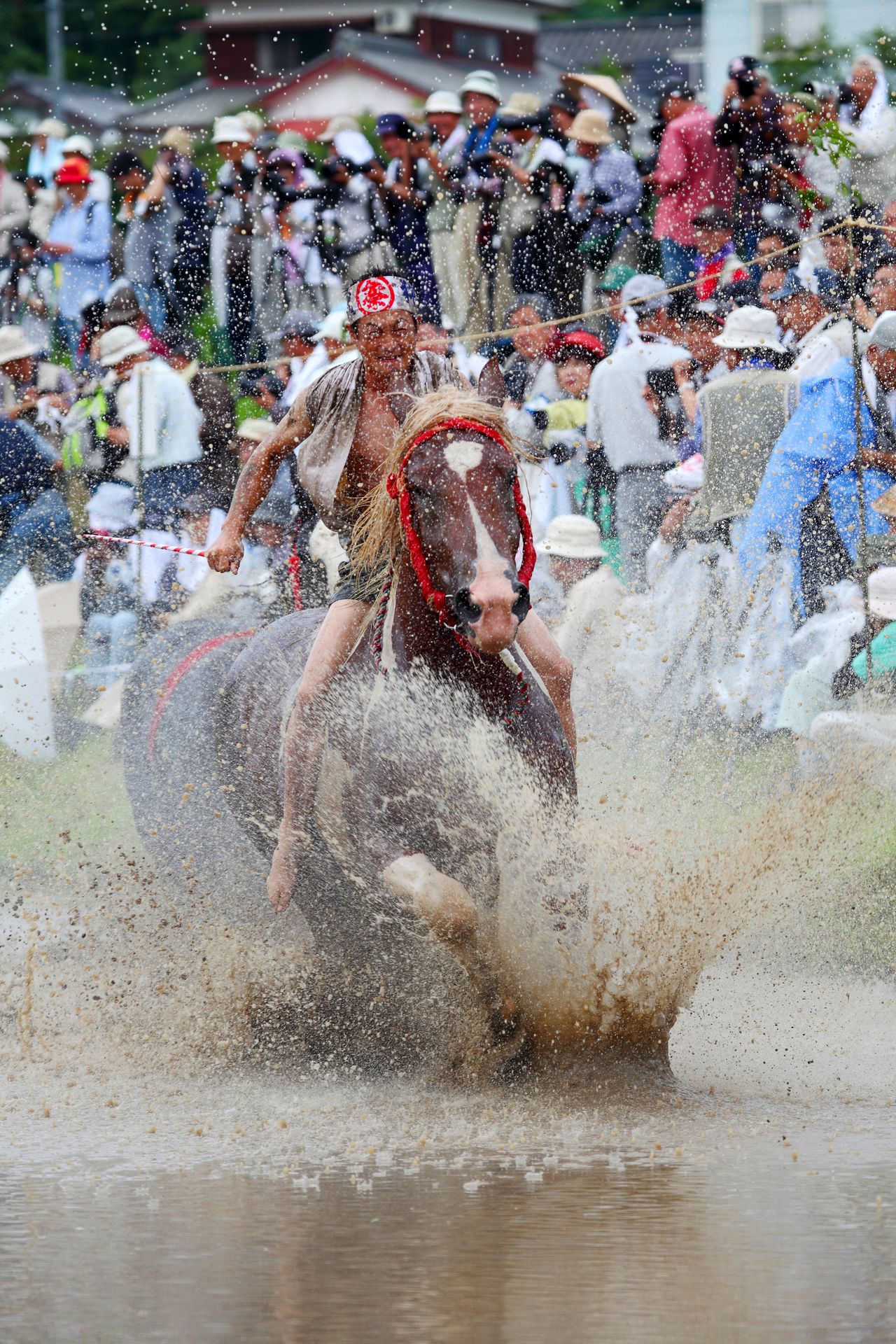
A horse and rider dash through the paddy, spraying mud as they go. Such stunning shots are almost always guaranteed a top place finish at the festival’s photo contests. (© Haga Library)
Mud flies, covering riders and spectators alike. No one begrudges the mess, though, as the mud is regarded as bringing good health. Instead, spectators vie to get a perfect photo of riders clinging to their horses for dear life as the beasts charge through the paddy.
Following the paddy race, the mikoshi is taken into the paddy, horses and oxen are brought in to till the soil, and women in woven bamboo hats and cotton kimono line up to plant rice seedlings. The energy parishioners expend on this festival is sure to move the deity of the rice paddy to ensure a bountiful autumn harvest.
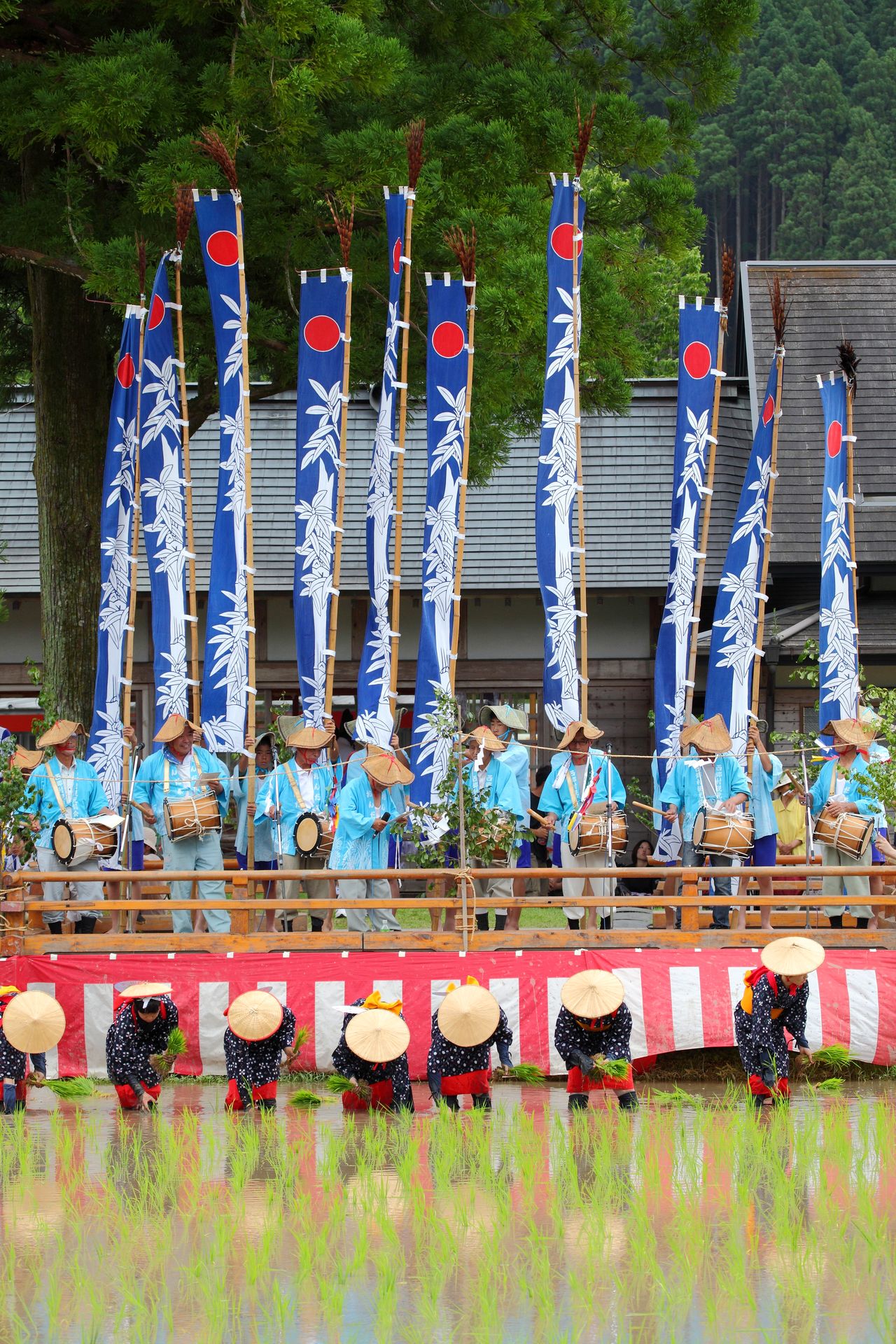
Women plant rice seedlings to the sound of taue (rice planting) songs. (© Haga Library)
(Originally published in Japanese. Dates given are those on which the festivals are usually held. Banner photo: Katchū racing at the Sōma Nomaoi festival. © Haga Library.)